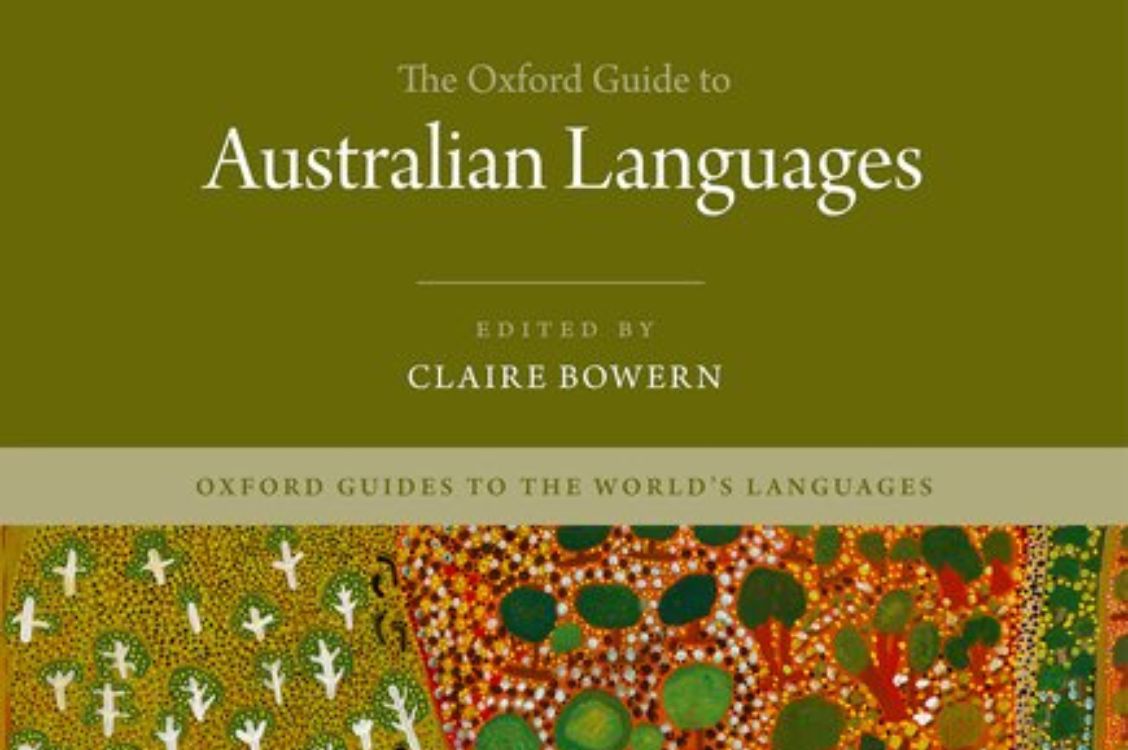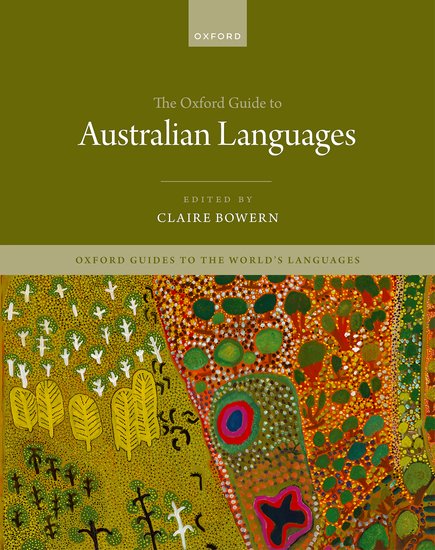
- Free Article: No
- Contents Category: Indigenous Studies
- Review Article: Yes
- Article Title: ‘Treasure every word’
- Article Subtitle: The linguistics of Australian Indigenous languages
- Online Only: No
- Custom Highlight Text:
Kado Muir – a Ngalia man – will never be able to have another conversation in his mother tongue. He tells the story of witnessing each of his elders dying and, in the process, his language. Successively, he had fewer and fewer people to communicate with. In the case of his language community, younger contemporaries shifted to English as the language exerted its colonial power – until at last Kado Muir became the last speaker of Ngalia.
- Featured Image (400px * 250px):

- Alt Tag (Featured Image): Thomas Poulton reviews 'The Oxford Guide to Australian Languages', edited by Claire Bowern
- Book 1 Title: The Oxford Guide to Australian Languages
- Book 1 Biblio: Oxford University Press, £145 hb, 1,168 pp
- Book 1 Cover Small (400 x 600):

- Book 1 Cover (800 x 1200):

Enter The Oxford Guide to Australian Languages, edited by Claire Bowern, Professor of Linguistics at Yale University. This substantial and hefty Guide, introduced by Kado Muir’s poignant and powerful account, stands as an invaluable resource. It is the fifth instalment in the Oxford Guides to the World’s Languages series (at least eight more are on the way). The series is intended to offer readers thorough and methodical overviews of various linguistic studies tailored for specific language families and regions. Each Guide boasts insights from prominent authors who shed light on diverse subjects, such as language evolution, the nuances of language interaction, sociolinguistic patterns, structural language variations, in-depth textual analysis, and the intricate differences in grammar, phonetics, and semantics across languages.
Bowern and her seventy-six contributors (fifty-five of them based in Australian institutions) masterfully deliver on the book’s promise advanced in several thoughtfully detailed introductory chapters exploring both the historical landscape and taxonomies of these languages (both old and new) and the intricacies of documentation methods that aim to preserve them. The Guide is then divided into four other parts. Part II contains the structurally oriented chapters, which delve into the typology at all levels of the linguistic system. We begin with the smallest elements of language: phonetics and phonology, moving our way up to morphosyntax, and concluding with semantics, pragmatics, and discourse. Each chapter stands as a testament to the state-of-the-art advancements in its respective domain, making it the authoritative reference on these topics.
In Part III, the narrative takes a sociolinguistic turn. This section examines linguistic variation, touching on pivotal subjects such as code-switching, the emergence of multilingual societies, nuances of child-directed speech, auxiliary linguistic registers, and the intriguing dynamics of languages in contact.
The Guide does not stop there: Part IV pushes the boundaries of the series’ original ambit by addressing the intrinsic role of language within a community. It navigates policy, acquisition, and the crucial methods of revival and reclamation – essential for the sustained vitality of these languages.
Part V is anchored by illuminating case studies. These studies not only celebrate the richness of individual languages, but also contain a meticulous analysis of linguistic zones, all contributing to a comprehensive portrait of these languages’ uniqueness and complexity.
Comprehensively, the Guide elevates Indigenous languages to international prominence, underscoring the profound influence Australian languages have had on our collective comprehension of linguistic phenomena. These languages challenge and break away from entrenched Eurocentric views. Moreover, the Guide goes the extra mile to correct widespread misconceptions stemming from broad over-generalisations about the capabilities and characteristics of Indigenous languages, ensuring that they are presented in an authentic light and given just representation.
No reference book is without gaps. Despite offering such a thorough and comprehensive overview of the languages found in Australia, the more the volume covers, the more, in a way, it feels as though something is missing. Indeed, Bowern concedes the lack of several topics: the common feature of ‘associated motion’ found in Pama-Nyungan languages but rare elsewhere; lexicography; grammar writing; and further explorations in the domain of lexical semantics. But for spatial constraints, these aspects would have enriched the book.
In a candid moment, Bowern acknowledges the lack of Indigenous authors. This isn’t a deliberate oversight but rather an inadvertent result of the long-standing divide between the academic circle and the very communities that are central to such studies. Change, however, is afoot. The prevailing sentiment in the field is now gravitating towards empowering Indigenous communities to spearhead the documentation and revitalisation of their languages, with linguists playing a more collaborative and supportive role. This philosophy is echoed throughout this volume. While the representation gap is yet to be completely bridged, it is paramount to appreciate, as Bowern emphatically and gratefully notes, that the entirety of the Guide’s content is rooted in the wisdom and expertise of Indigenous communities. Its foremost utility should be to serve, acknowledge, and enrich those communities.
Despite the unequivocal losses discussed both here and in the Guide, and despite significant threats to their survival, Indigenous languages remain symbols of resilience, pride, and identity. While the Guide highlights the undeniable challenges faced by Indigenous languages, it also underscores their enduring spirit and strength. As we witness a slew of language revitalisation initiatives, let us hope that this volume plays a pivotal role in bolstering their outcomes.
Claire Bowern’s aspiration for this Guide is clear: she wants readers to ‘mourn, witness, remember, respect and celebrate: mourn what has been lost and the circumstances under which that happened; witness the consequences and remember what has happened; respect individuals and communities for their choices they make about their lives, land, and languages; and celebrate the work currently being done so these languages continue across the land and are handed on’. To that end, the Guide shines as the current standard in understanding the linguistics of Indigenous languages and, more importantly, the historical and cultural context of those languages. As Kado Muir himself writes: ‘Pick it up, read it. Wonder, be inspired, and treasure every word.’


Comments powered by CComment